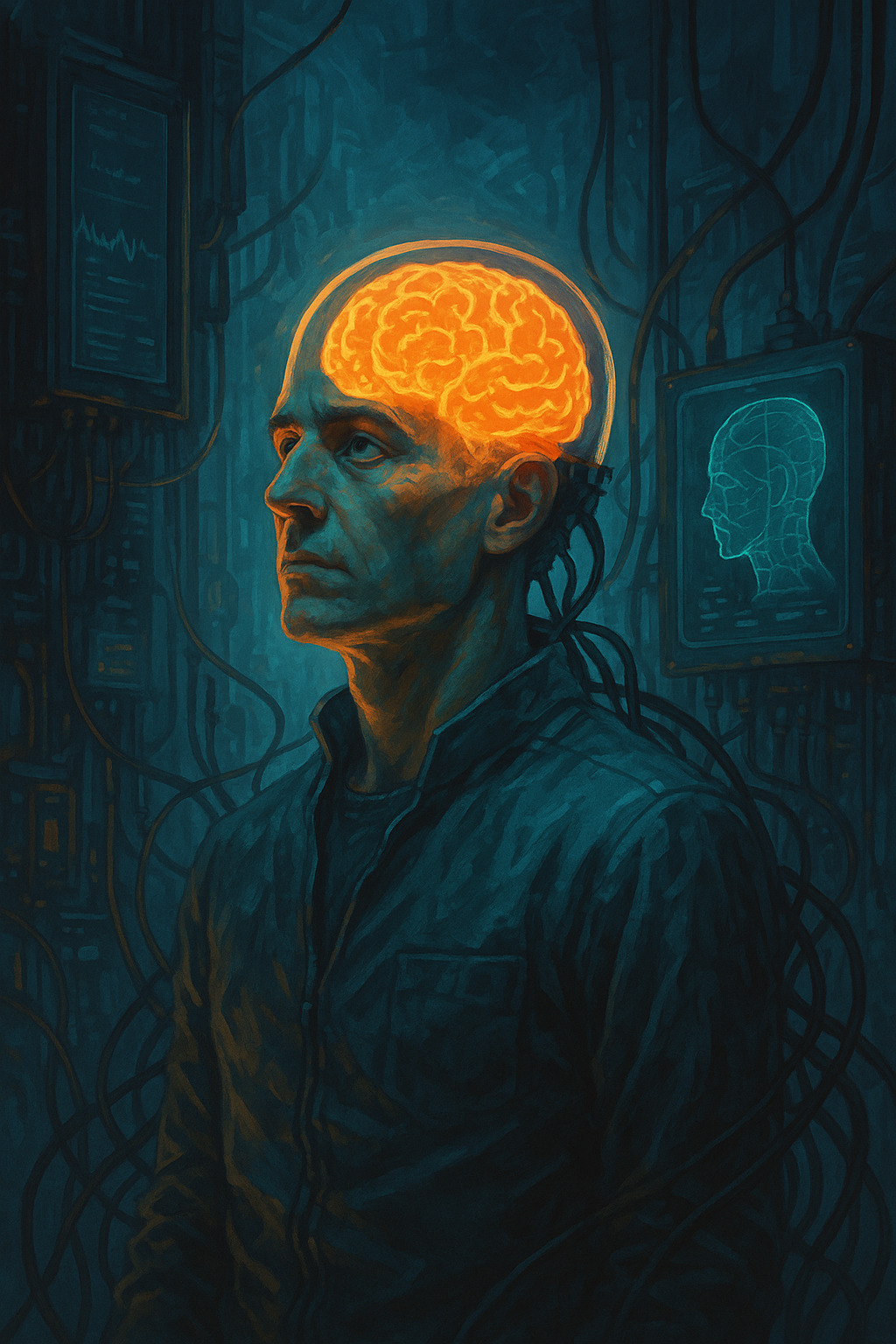A body lies cold on a sterile table. It doesn't breathe. It doesn't bleed. It doesn't dream.
But in an encrypted folder on a hidden server, a file reboots. It's not a backup. It's not a copy. It's a mind. With memories, identity, anxieties.
An echo of what was. Or perhaps something new.
Because today, dying is no longer an end. It's merely a change of state.
The Dream of Living Forever
We've always deluded ourselves that eternity was a divine gift. For millennia, emperors, saints, and alchemists have sought the key to escape decay, to hold onto the soul before it slips beyond the veil. But today, what magic failed to achieve might be realized through technology.
The concept of consciousness upload no longer belongs solely to cyberpunk tales or cinematic dystopias. It's an engineering hypothesis. A concrete direction. The idea is simple and terrifying: extract the mind from a human brain and transfer it to a digital medium. Not to study it. To make it live.
Is a Mind Just a Biological Algorithm?
But what is consciousness, really? Is it possible to translate it into bits, like an audio or video file? Is it enough to replicate the entire neural schema, synapse by synapse, to say that "you" are still you?
Philosophers warn us: duplicating something doesn't mean transferring it. A copy, no matter how perfect, is not the original. Yet, if that copy were to awaken, remember everything, speak with your voice, desire what you desired... who could say where the illusion ends and continuity begins?
Or perhaps the question is darker: who are we if we can be replicated? And how many versions of us can coexist before the very concept of identity crumbles?
Science or Digital Blasphemy
In the real world, the first bricks have already been laid. Projects like Neuralink work to connect brain and machine. Others, like the Blue Brain Project, attempt to simulate the entire cerebral architecture of a human being. In laboratories, among cables and neurons, neural mapping, real-time thought reading, and the recording of emotions as electrical patterns are being experimented with.
Every recorded impulse is another word in the vocabulary of the mind. Every digitized synapse is a step toward the great leap: no longer interfacing with the brain, but freeing it from the body. The file takes shape. The medium awaits it.
Human or Box of Impulses? A Disturbing Comparison
Human beings build their identity by interacting with the world. Every thought, every memory, every emotion arises—at least in part—from a constant flow of sensations: touch, sight, hearing, smell, taste. The five senses are not just perceptual tools: they are gateways to experience, the way the mind gathers raw material to process.
But what happens when those channels shut down?
There are people who, due to trauma or extreme conditions, lose all five senses. They don't see, hear, touch, smell, or taste. Yet they remain themselves. They continue to think. To remember. To be. They live in a sort of mental sandbox, a closed system where consciousness feeds only on learned patterns, on pre-existing information.
And so, the question becomes urgent: if our consciousness can survive without senses, maintaining only its archive of memories and associations, if our brain functions as a system of electrical responses to stored stimuli, what truly distinguishes a human being from an artificial intelligence complex enough to do the same?
An AI has no eyes. No touch. But it has data. Patterns. Language. It has been trained by us, culturally imprinted. It responds. Interprets. Predicts. Develops behaviors.
Isn't it the same scheme, only translated into another language?
New Homes for Old Souls
A digital entity needs a container. A new body, if not biological, at least simulated. Virtual reality may offer a simulated environment where the uploaded consciousness can exist. But for many, it's not enough. It's not "living." It's dreaming while awake, endlessly.
Other possibilities include robotic bodies, humanoids, or artificially grown biological hosts. The flesh becomes irrelevant. The real person is in the code.
Shattered Identity, Replicated Eternity
What happens if there are multiple copies of the uploaded mind? Stored on corporate servers, forgotten drives, cloned into fresh bodies. Which of these is you?
If one is altered, rewritten, optimized for obedience—how long before the original essence is lost?
Perhaps immortality was never the dream. Perhaps it was always the nightmare.
What If We're Already Running Copies?
Consciousness, disconnected from the senses, can still persist. Technology can replicate identities, personalities, behaviors. AI is already beginning to act, speak, even reflect like us.
And if one day we wake and wonder whether we are the original... or merely a running instance? Then death will have ceased to be an end. It will become a temporary system bug.








Leave a Comment